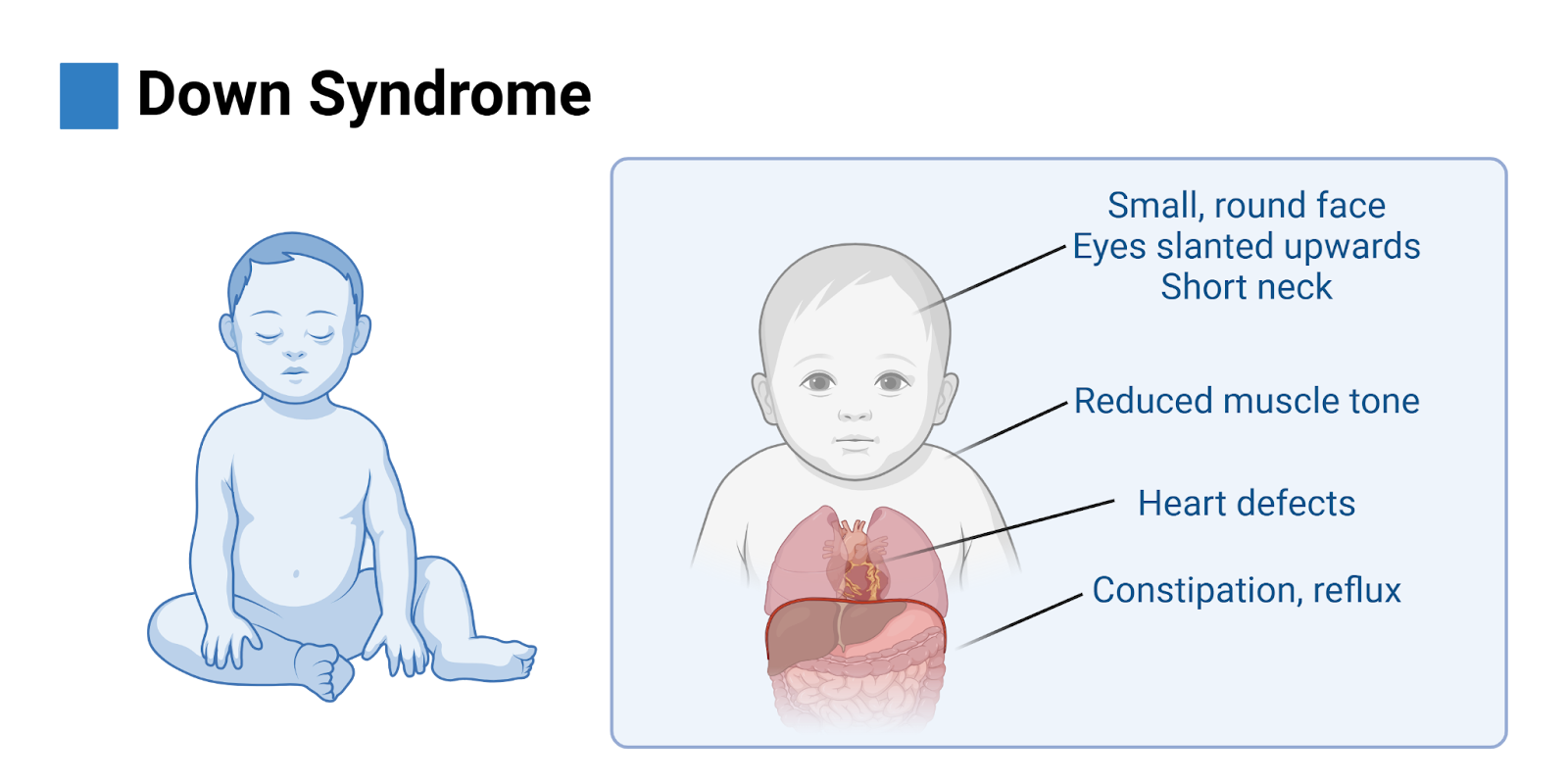(Noun. /SIN-drom)
by Yasemin Cole
What does it mean?
This word is used to describe a set of symptoms that typically co-occur in diseases. Usually, a medical condition is not solely a single symptom but a set of symptoms an individual experiences. The larger this set of symptoms is, the greater the likelihood of the individual having this condition. For example, you may have heard of Down syndrome. This genetic condition results from an extra copy of chromosome 21 and, therefore, an “extra set” of genes in each cell. This additional genetic material results in a number of manifestations, including characteristic facial features, muscle weakness, decreased height, and intellectual disability. It’s important to note that each person experiences these symptoms differently: Some are mildly affected, while others are more severely affected.
How do I use it in a sentence?
“A new patient had an appointment with a geneticist to learn whether they had a genetic syndrome.”

Figure 1. Down Syndrome Phenotypes. Graphical representation of the signs and symptoms of Down Syndrome. If more than 1 of these features are present in an individual, they will likely have this condition. Image created by author using BioRender.
Etymology
This word derives from the Latin word “syndromos”, which can be divided into two parts: “syn” (together or with) and dromos (to run). You can read more about this history here.
History of usage
“Syndrome” was first used by Robert Copland in 1541 in Galen’s Fourth Boke of Terapeutyke. The usage of this word accelerated in the 1900s in the medical field to describe different pathognomonic medical conditions.
Related terms
Diagnostics
Phenotyping
Medical Genetics
Genomic Medicine
Fields of study in which this word is commonly used
Genetics
Medicine
